 =0=
=0=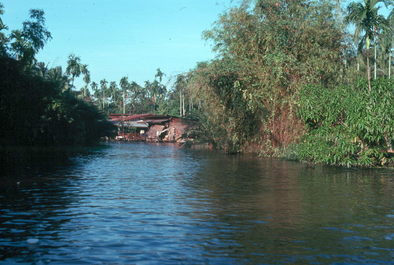 =0=
=0=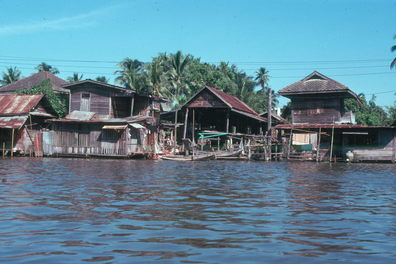 =0=
=0= =0=
=0= =0=
=0=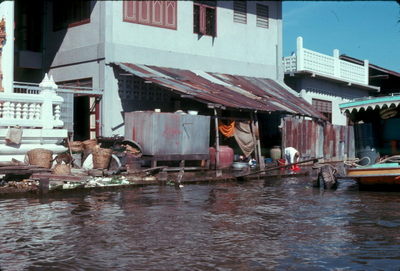 =0=
=0= =0=
=0=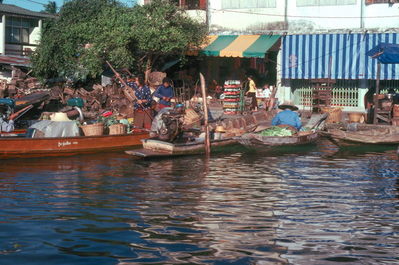 =0=
=0=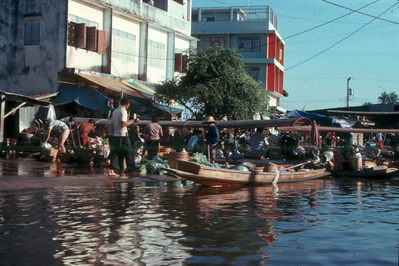 =0=
=0=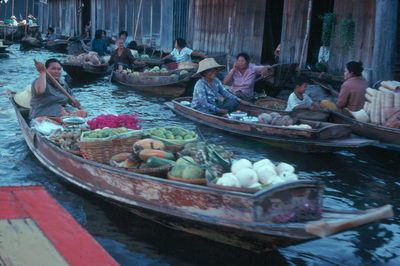 =0=
=0=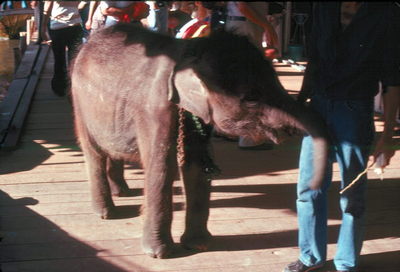 =0=
=0= =0=
=0= =0=
=0= |
 =0=
=0= |
| The waterways around Bangkok (which is on a river) seem to be major thorofares for the Thai. The pictures above and on the right are different scenes along the waterways. The one on the left above is a scene we saw as we were crossing a bridge and saw two Thai pushing their boat along the river with poles. Then in Bangkok we took a tour of the water ways which were mostly pretty overgrown. |  =0=
=0= |
 =0=
=0= |
 =0=
=0= |
| There were many buildings which were built right up to the water and sometimes even over the water with the primary access as the water way itself (that would be their idea of local access road). In Thailand the water ways are called Klongs and Bangkok is known as the Venice of the East. The picture above on the left is of a typical house along the Klong. The water level was higher than usual and many of the first floors were flooded. However, the Thai normally were barefoot and the water didn't seem to bother them at all. in some of the pictures. Also, in that picture you might notice the large earthen jars which would be their source of drinking water and just collected rain water. For washing and bathing they would just use the Klong. When I heard that they bathe daily in the Klong, I, of course, being mail with the usual purient interests kept my eyes peeled. Sure enough I soon saw a very attractive young woman bathing in the Klong, but she did it fully clothed. Presumably washing the clothes along with herself. Oh well. If you notice, the house on the left has both a thatch roof with a sheet metal roof over the porch. The house on the right is probably a little newer and has a completely sheet metal roof. This picture is of one of the businesses which were also on the Klong. This would be a warehouse where the stored goods arrive and depart via the Klong. |  =0=
=0= |
| This slide is of a Thai nursery with all the orchids just above the warer. Below is an example of the traditional Thai marketplace which would be on Klong. Farmers would bring their produce to sell to the market on the Klong and then pick up whatever they needed from other vendors. A housewife who lived in the city would take her boat to the market top pick up whatever she needed from the vendors in their boats on the Klong. |  =0=
=0= |
 =0=
=0= |
 =0=
=0= |
| On the right below is a picture of a vendor that we bought a bunch of bananas from. The bananas were tiny, only about three inches long and half an inch around. They had very thin skins and were very sweet even though still firm. The bananas in the states tend to not get sweet until they are pretty mushy and are a little bitter when still firm, but these Thai bananas were ultra-fresh (we assumed) and both sweet and firm. Just yummy! Also, if you notice the woman in the boat further away is wearing a hat which looks like a lamp shade and is the traditional Thai head gear. As in Taiwan, the hat is not held on but just sets on their head. The woman in the closer boat also has a hat like that, but hers is behind her. |  =0=
=0= |
| Our tour was from a waterbus with seating for about twenty. One of the things we didn't like about the tour is that they would periodically stop a 'rest stops' which were really just shops. They would be about the size of a five and dime store in the states (or a dollas store if you aren't that old) which would be quite large by Thai standards where family stores are common. The shop would mostly sell souvenirs which didn't particularly interest us. We assumed that the waterbud driver got a kick back for bring people to the shop, which made us more hesitant to buy there. However, at one of the rest stops we were happy to see a young elephant and its trainer. In northern Thailand elephants are still used in their logging operations. If well trained, the elephants are found to be more productive, reliable, and careful than machines. Young elephants are assigned (sold?) to trainers who are still in their teens and the elephant and trainer. |  =0=
=0= |
| The tour brouchure said that the tour who go by a snake farm, but actually the tour stopped there for twenty minutes. There was a $4 charge for admission, but as the tour itself only cost $5 we weren't particularly interested. We were a little aggravated though as we didn't have anything else to do in the twenty minutes, but we discovered there was a path (only a little submerged in water) that took us to this temple. That was nice. |  =0=
=0= |
This page was last updated on October 30, 2005.